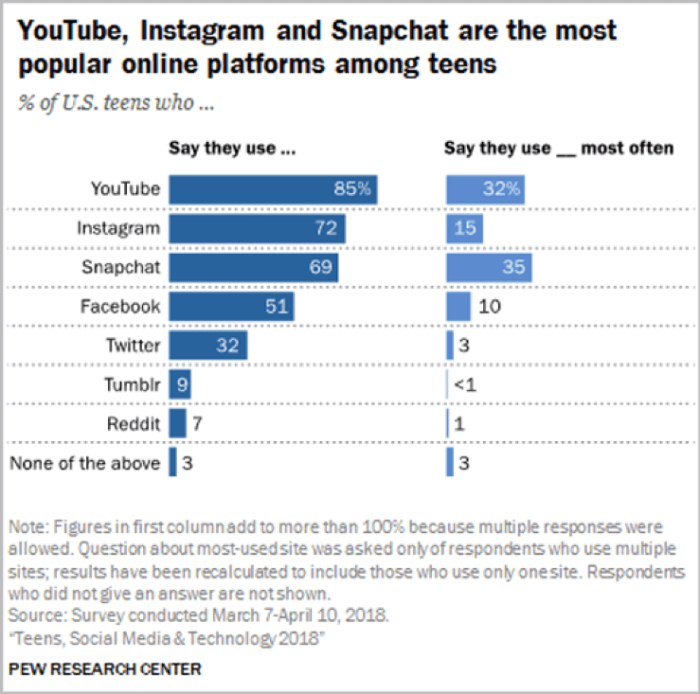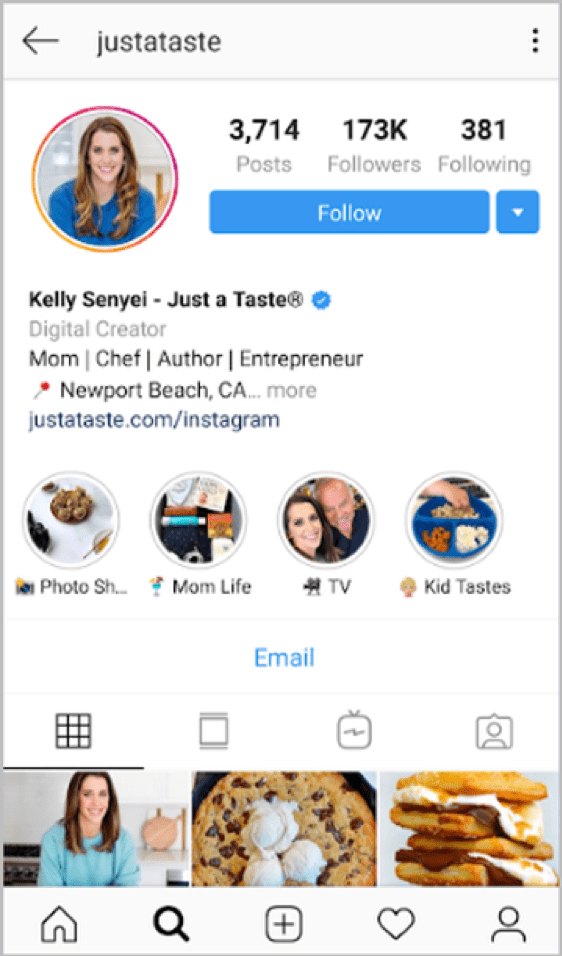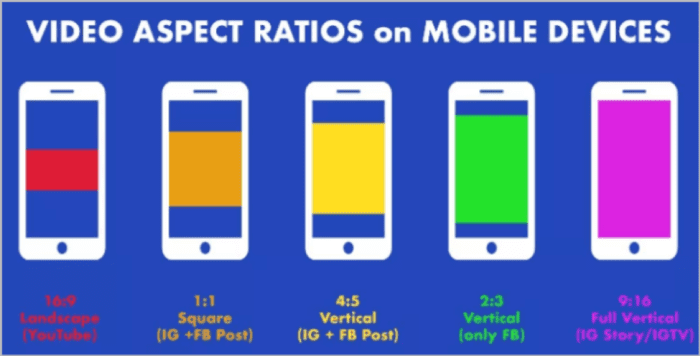Social video shares are king, making video one of the most powerful marketing tools in your arsenal
In case you’re not yet convinced how dominant video is on the internet landscape, here’s some compelling data. According to 2017 Cisco projections, online videos will comprise more than 80% of all consumer internet traffic by 2021. The internet has officially become a watching, rather than reading, medium.
The implication: to stay on the forefront of this video binging, you need to become a strategic producer of videos for your brand. You also need to post them where your prospects’ gaze and attention will increasingly be focused: social TV apps.
Download our Individual Member Resource – Video and YouTube marketing guide
Our guide shows you how to review the full opportunities from video marketing whether you are a company looking to integrate video marketing more into your campaigns or a marketing agency looking to improve your video marketing services.
Access the Video and YouTube marketing guide
If you haven’t spent much time living — or marketing — in the social realm recently, you need to understand this: while views are important, it’s content shares that are king here. Because when your viewers share content to their social sphere, they amplify the content’s value. Over time, this will generate more buzz around your brand.
Instagram posts are the most shared of any platform. In fact, according to a Forrester study, Instagram boasts an overall engagement rate (which measures by likes, shares and comments from consumers) of 4.21%. That’s ten times higher than Facebook and 84 times higher than Twitter. And who’s doing most of the sharing? You guessed it, Gen-Y Millennials, and the Gen-Z teens and twenty-somethings right behind them.
Now let’s dive into the three strategies you can use to most effectively grow your brand on social TV channels.
1. Choose the right TV platforms for your brand
A lot of social TV platforms have emerged recently, such as Hulu Plus Live TV, Sling TV, YouTube TV and Facebook Watch. Among these, Facebook and YouTube are certainly the best known. But does that mean they’re the best place for you to post your brand awareness-building videos?
As always in marketing, the answer depends on your target market. For example, if your lifestyle product targets 45 to 60-year-olds, publishing videos on Facebook Watch may be a good choice, since much of your audience will be on the Facebook website or app.
But if you’re targeting teens (19 and under, as of March 2018), you should key into the social platforms they’re using most often, which are YouTube, Instagram and Snapchat.

SnapChat TV, for instance, has started to release several new shows comprised of five-minute episodes, each with fast-paced storytelling and highly-engaging graphics. This new format seeks to capture the fleeting attention of increasingly-short-attention-span teens.
Another thing to bear in mind: there’s a lot of ‘reciprocity usage’ of social apps - for example, the percentage of Instagram users who regularly use YouTube, and vice versa. So you should be thinking of publishing your social TV videos to both primary and secondary platforms in order to increase your views and followers.
2. Publish the right types of videos
One size definitely does not fit all when it comes to videos suited for social consumption. For your videos to earn the most followers, you should publish a mix of:
- 'Evergreen content' videos (featuring content that’s relevant and valuable to your followers for months, if not years). Examples of this are 'how to' videos and videos that answer your prospects’ most-asked questions about your brand, product or lifestyle segment.
- 'Hot content' videos (featuring content that’s trendy or must-see). For the latest news in their social world, your followers should think 'I’m going here to see it first'. Of course, if you can entice them to subscribe, they’ll see this content directly in their social account feed.
- 'Brand story' videos (videos that showcase who you are, and why you do what you do). These videos may tell your brand origin story, or show behind-the-scenes footage that lets your followers feel like an insider.
- 'Aspirational lifestyle' videos (videos that feature social influencers, or other 'partner' brands in your space). These are videos that make your followers want to live the lifestyle that your influencers or partner brands represent.
Think of creative ways you can combine two or more of the above content types. Kelly Senyei, entrepreneur and chef from 'Just a Taste', has done just this.

Here’s her journey. After blogging for a few years, she 'made the rounds' on traditional TV channels like the Today Show and the Hallmark Channel. Then she started posting pictures and how-to videos on Instagram, the most popular of which she also published to Instagram TV. The result: 173,000 loyal followers and growing.
Also, since Kelly teamed up with Williams Sonoma while cooking some of her recipes, she earned some promotional revenue through that brand partnership.
3. Publish videos of different lengths
As you start planning the videos you’ll post to your social TV channels, think about your prospects and followers, and how their viewage will vary based on both their buying stage and the context in which they’ll be watching your video.
For most brands, my recommendation is that you create videos in these three lengths:
- Short-form, 'snippet' videos for quick consumption on mobile phones. Animated GIFs can work well for this purpose, too. Think of your prospect waiting in line for 15 seconds when you’re creating these quick-glance videos.
- Mid-length videos, either stand-alone or linked together as stories. These videos are most suitable for viewers who have a bit more time, but less than 100% attention. As an example, visualize your prospects watching these videos while taking a work break.
- Long-form videos, the ones most suitable for 'streaming style' viewing. Think of your prospect watching Netflix or your Instagram TV channel after a long day at work. Just don’t make these long-form videos too long. Seven to ten minutes maximum is a good guideline.
Plan the ideation, scripting and editing of these various videos into your video production schedule in order to avoid unnecessary rework. In many cases, it’s best to record your long-form video first, then do some editing to pare it down to your mid-length and short-form versions.
Repurpose your existing content
Repurposing content is an excellent way to get more 'mileage' from your content development efforts. So, if your team has already posted some blogs or scripts for your other social media videos, create some mid-length and short-form script variations for your social TV videos. Repetition is almost always a good thing in marketing. Besides this, since many of your followers will have one or two preferred listening channels, they don't tend to see many repeat messages.

3 other must-dos for social TV videos
Produce your videos in vertical format
It was only a year or so ago I was always tilting my phone to watch videos. Not so much anymore. In fact, the 'vertical video' format has become the defacto standard for videos posted to social media (especially Instagram).
So, after you’ve recorded your videos in the typical landscape layouts (16:9 and 4:3) you will serve up to laptop or desktop screens, also create a mobile-specific vertical version during your editing process (typically 9:16 and 1:1 ratio). Then use 'device detection' in your HTML code to serve up the most suitable version.
Always fully SEO-optimize your videos
Before people can follow your brand, they first need to find you and this means having good SEO. So make sure videos you create and post have been optimized for top keywords on the major search engines. You should also make sure all your videos have the appropriate hashtags.
If you want to dig deeper into video SEO, check out these tips from the experts at SearchEngineLand for improving the 'findability' of your videos.
Publish some ‘raw’ videos, too
If you’re a perfectionist, it can be hard to push out work (videos in this case) that doesn’t have that '100% polished' look. But the internet isn’t the place to just post pixel-perfect videos; it’s just as important to post your videos frequently.
So record, edit and publish a mix of 'semi-polished' and 'raw and unfiltered' videos for your social TV channels. The first type will show that your brand is legitimate and professional. The second will prove that you have authentic, imperfect people behind the scenes. Over time, these two styles will make your brand more relatable.
Get more followers through social videos
As a digital marketer, it’s important to know that video is no longer a 'nice to have.' It’s the content of choice for the vast majority of your would-be followers (and eventual buyers). So now, in the emerging era of social TV, it’s imperative that you produce the right kinds of videos, and publish them on the right platforms and channels.
You’ll probably need to hire (or outsource) a talented scriptwriter and video editor to make this happen. But if you produce and post short, engaging and authentic videos on a consistent basis, your brand will soon have a growing list of loyal followers.











